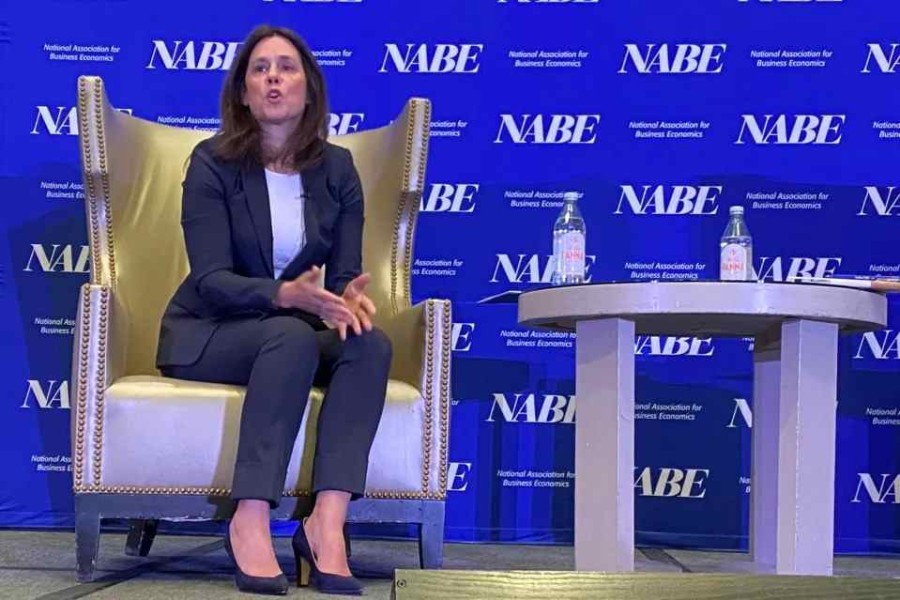Fed officials call for 'gradual' and 'modest' rate cuts

Three Federal Reserve officials reiterated Monday that they see the central bank moving gradually to lower rates, giving the Fed time to assess any uncertainties associated with the job market and inflation.
Kansas City Fed president Jeff Schmid called for a "cautious and gradual" approach to easing monetary policy. Minneapolis Fed president Neel Kashkari said he expects "modest cuts over the next quarters."
And Dallas Fed president Lorie Logan repeated her prior view that rates will come down "gradually," citing an increased risk that the job market could worsen and a danger that inflation
Schmid was even more direct, saying "my preference would be to avoid outsized moves."
“Lowering rates in a gradual fashion would provide time to observe the economy’s reaction to our interest rate adjustments and give us the space to assess at what level interest rates are neither restricting nor boosting the economy,” Schmid added in a speech in Kansas City, Mo. titled, "How far and how fast."
The Fed last month lowered rates for the first time in more than four years, by half a percentage point, while estimating that rates would move even lower over the next 12 to 18 months. Fed officials penciled a median estimate of two more smaller rate cuts for the remainder of this year.
Fed officials will meet again on Nov. 6-7, and traders are currently betting on a 25 basis point rate cut.
Fed officials were split at their last meeting about whether to start with a big or small cut, but many have since said they prefer to move at a measured pace going forward.
Fed governor Chris Waller said last week the Fed needs to proceed with "more caution" when cutting rates.
Logan said Monday the economy is "strong and stable" but that "meaningful uncertainties" remain in the outlook.
The downside risks to the job market have increased, she added, despite a stronger-than-expected jobs report for the month of September that caused traders to question whether the labor market was gaining more strength.
Inflation has come down after a Fed campaign to cool prices, Logan said, but there are still risks it could bubble up again.
Her comment comes after a warmer-than-expected inflation reading for the month of September, as measured by the Consumer Price Index, caused some to wonder if the Fed could slow or pause its new rate-cutting cycle.
Fed officials will get a fresh reading on inflation and the job market next week when their favored inflation gauge – the Personal Consumption Expenditures (PCE) index — is released along with the September jobs report from the Labor Department.
The jobs report may not offer officials a clear assessment because it could be buffeted by two major hurricanes that temporarily caused people in the regions affected by the natural disasters to be out of work.
Logan noted that any number of shocks to the economy could influence how quickly or slowly the Fed's rate-setting committee lowers rates and where rates should eventually settle.
"The FOMC will need to remain nimble and willing to adjust if appropriate," she said.
Schmid said he feels a cautious approach would also minimize the Fed’s contribution to financial market volatility.
While Schmid believes rates should come down now, he said he thinks interest rates could settle "well above" the levels seen in the decade before the pandemic.
“If the economy does not appear to be very restricted, then it seems unlikely that monetary policy is all that restrictive,” he said.
Previous Story
- What a hot job market means for inflation
- U.S. job openings fall to 8.1 million, lowest...
- Musk lays off Tesla senior executives in fresh...
- All India Pregnant Job service: Indian men conned...
- Why job candidates are 'ghosting' employers like never...
- Recruiters 'headhunting' underperforming employees to avoid expensive payouts
- US job growth remains strong in March
- US adds 311,000 jobs in February, unemployment at...